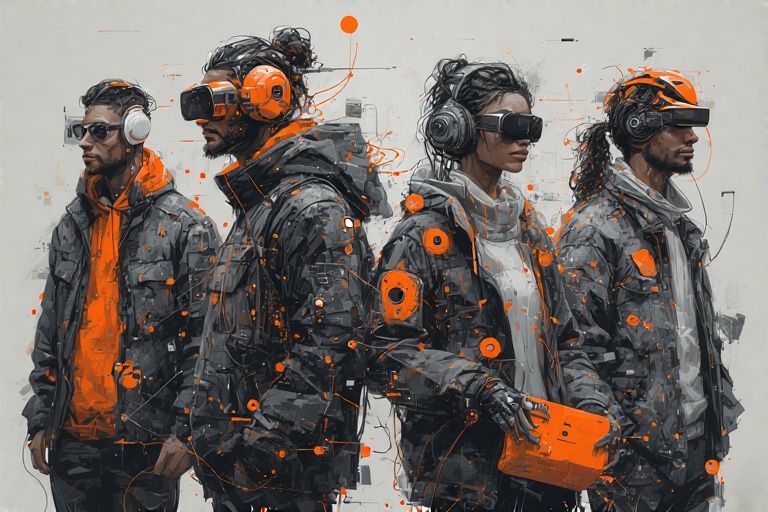In an era where anyone can fabricate audio, video or text with a few clicks, combing through truth and falsehood has become a high-stakes challenge. Deepfakes—synthetic media that convincingly mimic real people’s faces, voices and mannerisms—are now cheap and accessible. At the same time, large language models and automated “bot farms” can generate tailored disinformation at scale. Left unchecked, these tactics erode trust in journalism, politics and commerce. To safeguard our digital ecosystem, organizations must adopt a multi-layered defense that combines AI detection, provenance tracking, policy controls and media literacy.
Understanding the Threat Landscape
Disinformation is false content deliberately designed to mislead, whereas misinformation is false content spread without malicious intent. Deepfakes fall squarely under disinformation when used to deceive. According to the American Psychological Association, misinformation is “false or inaccurate information,” while disinformation is “false information which is deliberately intended to mislead”. As of early 2025, 25.9 percent of executives reported at least one deepfake attack on their organization, and creating a convincing deepfake video can cost as little as $100.
Mechanisms of AI-Powered Disinformation
- Deepfake Video & Audio: GAN-based systems produce hyper-realistic face swaps and voice clones that can impersonate executives, politicians or private individuals.
- Automated Text Generation: Large language models craft fake news articles and social-media posts tuned to specific audiences, exploiting local grievances to maximize engagement.
- Bot Networks & Synthetic Influencers: Coordinated agents flood platforms with inauthentic accounts and AI-driven personas, creating the illusion of consensus or outrage.
- Microtargeting & Real-Time Feedback: Disinformation agents leverage real-time analytics to refine messaging loops, pivoting narratives based on user reactions.
- “Harvest-Now, Decrypt-Later”: Adversaries store encrypted traffic today—planning to use future quantum or AI methods to break current cryptography and reveal private data.
Real-World Examples
Threat actors have already weaponized these techniques in multiple domains. State media in Venezuela ran AI-generated news anchors to push propaganda under the guise of an international broadcast. A UK energy firm lost HKD 200 million when employees authorized transfers following deepfake video calls impersonating senior management. During the 2024 U.S. election cycle, spurious videos of public figures making inflammatory remarks circulated unverified, eroding confidence in legitimate news sources.
Detecting and Counteracting Deepfakes
High-quality detection tools are critical but not infallible. The MIT Media Lab’s “Detect Fakes” experiment showed that, with training, viewers can learn to spot subtle artifacts—unnatural blinking, inconsistent lighting and mismatched facial textures—in AI-manipulated videos. On the technology front, adversarial machine-learning models scan for statistical anomalies in pixel patterns, compression artifacts and biometric inconsistencies. Provenance frameworks, like the Coalition for Content Provenance and Authenticity (C2PA), embed cryptographic watermarks into media assets—flagging any post-production alterations.
A Multi-Layered Defense Framework
- Automated Detection: Deploy AI forensics tools that analyze video, audio and text for deepfake signatures and generate risk scores in real time.
- Provenance & Labeling: Integrate metadata standards (C2PA, blockchain anchoring) so any modification to a file invalidates its authenticity certificate.
- Policy & Governance: Enforce zero-trust principles for critical transactions. Require multi-factor and “four-eyes” approval for high-value wire transfers and media‐sensitive operations.
- Media Literacy & Training: Educate employees and the public on deepfake risks. Run workshops that teach participants to recognize audiovisual inconsistencies and verify sources.
- Incident Response: Build a rapid-reaction team combining technologists, legal experts and communications specialists. Pre-define escalation workflows for suspected deepfake incidents.
Emerging Strategies and Future Directions
- AI vs. AI: Use generative models to create “shield” deepfakes that confuse malicious deepfakes—forcing adversaries into an arms race of detectability.
- Hybrid Human-Machine Review: Combine automated flags with expert analysts to vet high-impact content, balancing speed with judgment.
- Regulatory Collaboration: Advocate cross-border agreements on digital authenticity laws, liability for platforms and penalties for malicious deepfake creators.
- Continuous Auditing: Periodically test detection pipelines with red-team deepfake exercises, ensuring tools evolve alongside adversary techniques.
- Resilience Planning: Embed disinformation response in business-continuity and crisis-management playbooks—enabling swift recovery from reputational or financial damage.
Conclusion
As AI-powered misinformation tactics grow more sophisticated, defending our digital truth ecosystem demands vigilance. Organizations that blend advanced detection, robust provenance, clear governance and widespread media literacy can stay ahead of adversaries’ deepfakes and disinformation campaigns. In the words of the World Economic Forum’s Global Risks Report 2024, unchecked digital lies threaten the very fabric of democracy and social trust. By adopting a multi-pronged security posture, we can ensure that “seeing is still believing” in an age of synthetic realities.







Add a Comment